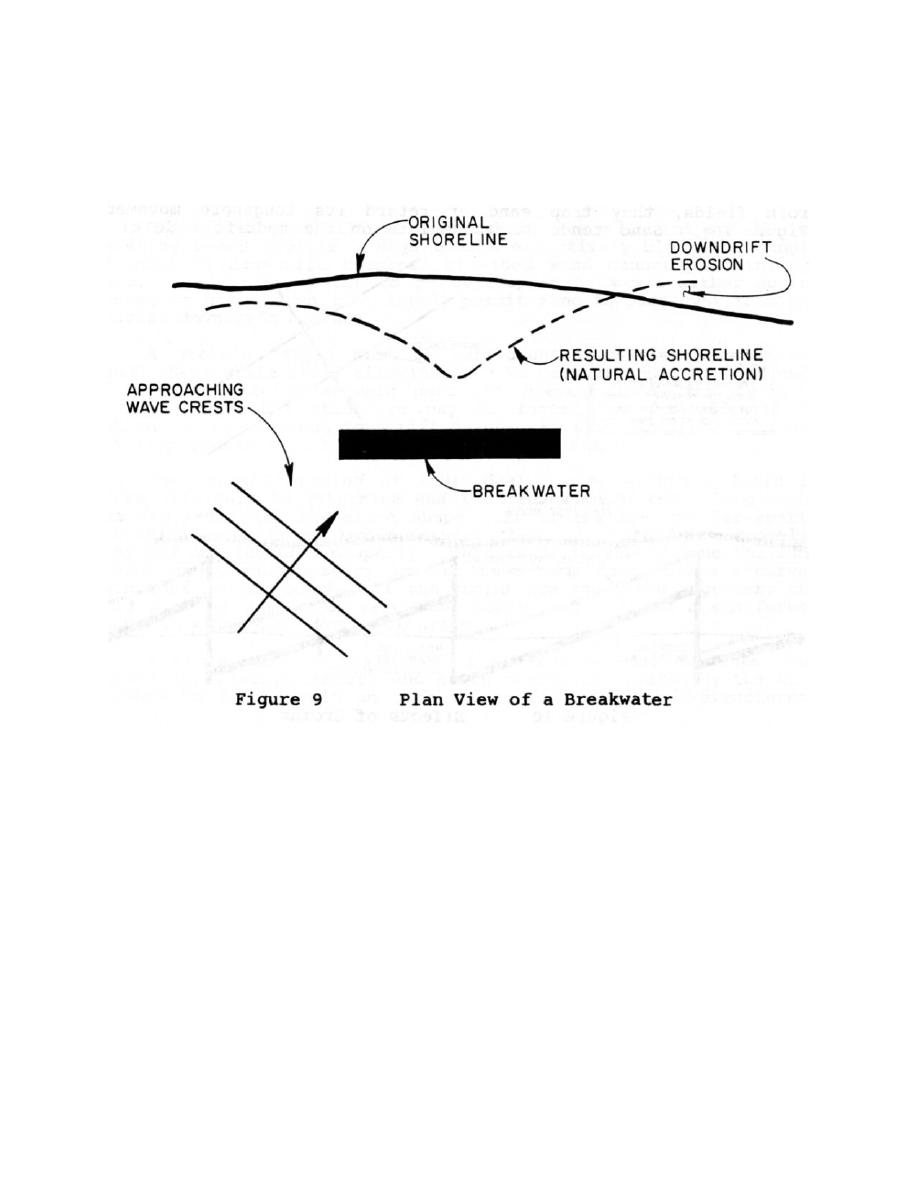
have a major effect on sediment transport. For instance, if incoming waves are reduced to 70% of their
original height after passing a breakwater, their ability to move sediment will decrease to 0.70 x 0.70 or
49% of their original capacity. Therefore, longshore-moving littoral drift will tend to accumulate behind
the structure. The ability of a breakwater to trap sand is a function of its distance offshore, length
parallel to shore, porosity, and spacing (where more than one breakwater is used).
If accretion continues until the breakwater is joined to the shore, the resulting system would act
as a large groin that would totally block the sand supply to the downdrift beach. This could cause
significant erosion damages. Therefore, the area landward of the breakwater should be partially filled
with sand after construction is completed. This may allow sand to continue past the structure and on to
the downdrift beach without causing serious erosion problems.
Breakwaters are either fixed or floating. Fixed breakwaters are large masses of heavy material that
rest on the bottom. Floating breakwaters are constructed of buoyant materials such as logs, hollow
concrete boxes and scrap rubber tires. The latter are most popular because of their durability and ready,
no-cost availability. Floating breakwaters are generally effective in sheltered waters where short-period
(less than five seconds) waves are dissipated as they pass floating structures. Such waves have short
lengths that may be less than the width of the breakwater.
23



 Previous Page
Previous Page
